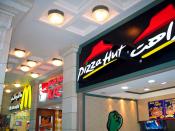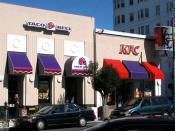Through reference to a specific enterprise or industry, what are the most important factors shaping organisational change and how has this affected management thinking and practice?IntroductionIn the business world, organisations are complex and dynamic entities. Each organisation is distinctive, therefore each organisational thinking and practice will be different. Due to globalisation, competition, increasing health awareness and new technology, organisations are subjected to change. Change in organisations can be in response to external forces, such as market shifts, competitive pressures, health and technological innovations, or it can be internally motivated, such as by managers trying to improve existing methods and practices. These changes are often referred to as organisational change. The University of Western Australia (2006) defines organisational change as "change that has impact on the way is performed with significant effects on staff." Organisational change affects the culture, structure and people in an organisation however, with effective change management, it aims to improve the performance and efficiency of the organisation and benefit the organisation in various aspects in relation to growth and competitive advantages.
The industry that we are going to examine and investigate is one of the rapid growth industries in recent years, known as the fast good franchise industry. Examples are McDonalds, KFC, Taco Bells, Burger King and Pizza Hut etc. This assignment will use different fast food franchises as examples to illustrate factors that drive changes in the fast food chain industry which are globalisation, competition, technology and health awareness, and how these factors affect today's management thinking and practice.
The fast food industry began in American in 1912, with the opening of the fast food restaurant, Automat in New York. Carl N. Karcher was one of the fast-food industry's pioneers during the early 19th century. Richardson & Aguiar (2004) pointed out in the 1950s that "three...


